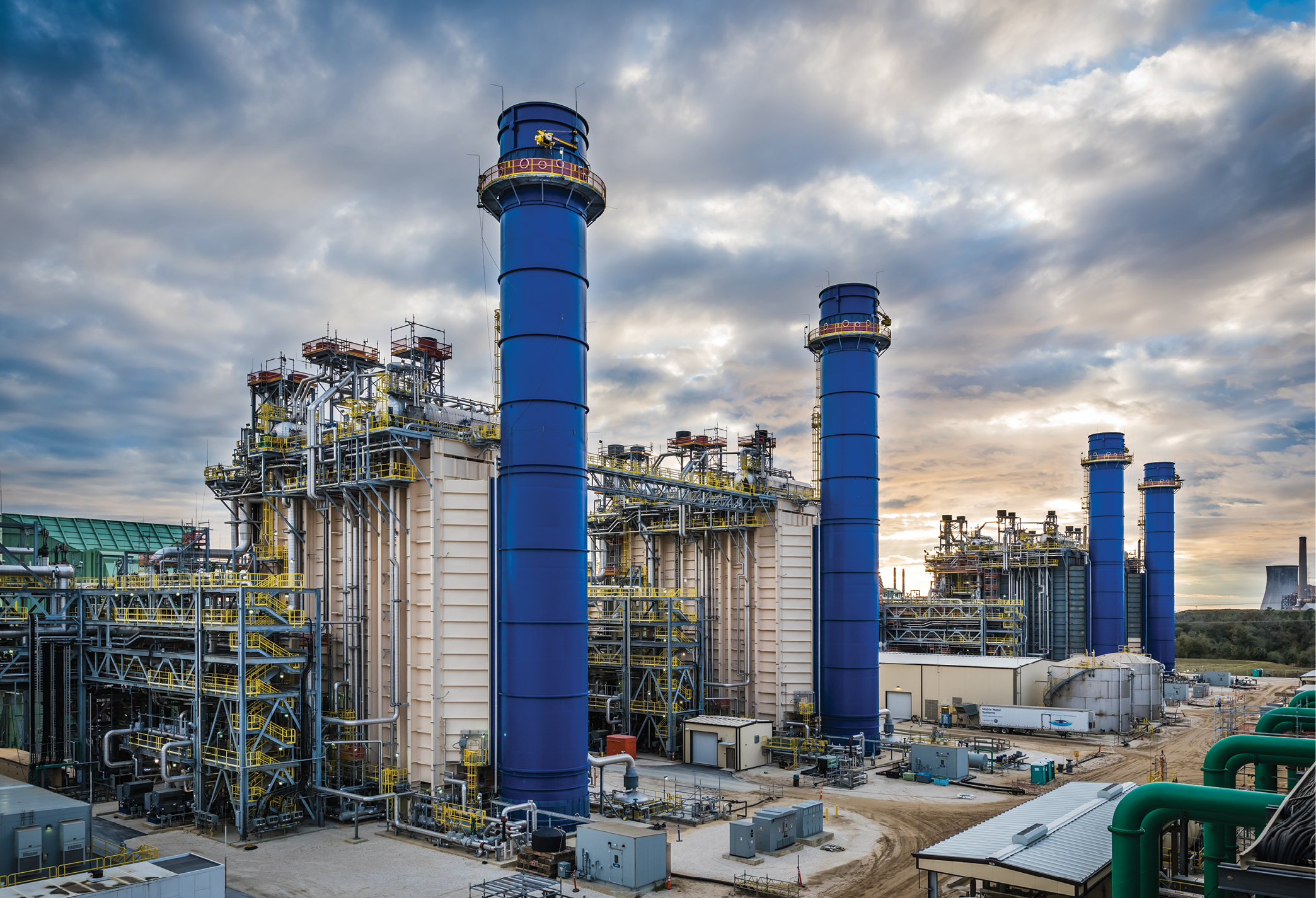When the Duke Energy Foundation and Duke Energy Florida’s Economic Development team awarded strategic economic development grants in November 2022, it was just the latest chapter in a longstanding story of support for the hard work by community leaders across the utility’s 35-county territory.
Exhibit A: The University of Central Florida Research Foundation received a $20,000 grant on behalf of the Florida High Tech Corridor to raise awareness of the Corridor’s Research and Innovation Support for Florida Businesses initiative. “Since 1996, the Florida High Tech Corridor has created and invested in initiatives to drive tech industry growth and advance the lives of people in the communities we serve,” said Paul Sohl, CEO of the Florida High Tech Corridor Council. “Duke Energy’s support will help us continue our collaboration efforts and target prospective participants and referral sources with information about the Corridor, helping maximize business success in Florida.”
The Pasco Economic Development Council (Pasco EDC) received $25,000 to create a marketing campaign to promote local buildings, sites and existing industry/workforce images to a strategic list of recipients.
“We are thrilled to execute a very unique and strategic direct mail campaign utilizing our grant this year,” said Bill Cronin, president/CEO, Pasco EDC. “Duke Energy has been such a great partner to us in many ways over the years, and this will be our third grant program project. Duke Energy and their team understand the importance of standing out and delivering quality information to assist in business recruitment.”
Duke Energy, its legacy companies and the Duke Energy Foundation have contributed nearly $3 million in grant funding to economic development organizations. The grants go to state-level efforts too: This round saw $20,000 go to FloridaMakes to support a talent attraction campaign by providing manufacturers with the training and/or information needed to find and hire more workers and concurrently pursuing marketing efforts in those regions that will focus on students and job seekers who are not aware of the opportunities that exist in manufacturing.
Some of the same organizations to receive grants this go-round received awards in January 2022 as well. But the numbers demonstrate the Duke team’s ramped-up focus: Last year’s totaled $200,000 to 14 organizations. This year’s came to more than $545,000 in grants to 26 organizations. Marc Hoenstine notes that his team fielded more than 50 ideas and more than $700,000 in grant requests, and for those that weren’t funded, Duke Energy found a suitable alternate funding source within Duke Energy for nearly every one.
Among last year’s recipients was state economic development agency Enterprise Florida, which received $25,000 to support hosting and building relationships with site selection consultants and corporate real estate executives in attendance at Team Florida events.
“This year is a renewal and resurgence of the state’s marketing cooperative, and Duke Energy has always been there with not just the financial support, but strategic thinking and leadership,” said Destin Wells, Enterprise Florida Inc. senior vice president of business development, last year.
Grassroots and ‘Next Level’
A pronounced aspect of the Duke Energy Florida team’s own resurgence is doubling down on the potential of rural and outlying areas.
“For our more rural communities, providing any business intelligence already means they’re benefiting and coming ahead of what they could previously provide,” says Ben Friedman, research manager, Duke Energy Florida Economic Development. One recent example is the funding of market intelligence software via licenses that let community partners access demographic and economic information about their communities more quickly and easily than ever before. “Recently, we’ve had more interest in developing the urban fringe around our larger markets where there’s plenty of potential but often the local capacity lags,” he says. “I’ve worked with our business recruitment team putting together labor reports for companies actively considering these regions and consequently helped these communities tell their own story better to prospects.
“With the expanded team, we can be more proactive about going after companies,” Friedman adds. “We’ve done this a few different ways. We’re working closer with developers on industrial projects in our territory and leveraging the team to work closer at trade shows. We’re now using tools to better figure out who to work with to win more projects and have capacity to be more deliberate in our strategy.”
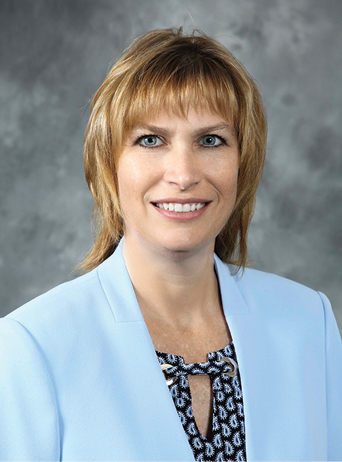
Suzanne Christman
One of the things Duke Energy’s economic development team has always done well is build up the “Economic Development 101” knowledge base of community stakeholders. Asked to describe a recent experience where the Duke team helped advance a community’s economic development awareness and progress, Friedman highlights the launch of a research scholarship program. “Companies want more and more information before committing to a relocation or an expansion, but many communities lack the staff or expertise to handle these requests,” he says. “Consequently, we launched a new scholarship with the Florida Economic Development Council and C2ER to train up local economic development staff.”
John Fremstad, director of Duke Energy Florida Economic Development’s new Innovation & Competitiveness program, says, “As part of the new program our innovation & competitiveness team brings a series of ‘Next Level’ programming to our communities. Under the ‘Next Level’ brand we are providing Electricity 101, a sold-out, two-day professional development conference featuring national speakers on site selection, storytelling, branding and an economic futurist; and ongoing rural programs — 2023 will be focused on retail strategies. In the past year, we’ve touched hundreds of individuals and organizations in our 34-county footprint Our ‘Next Level’ brand of programming will continue to grow.”
Teaming Up with the Best
So will the network of relationships, whether it’s the nationally prominent firms Duke Energy calls on to help implement its Site Readiness program or organizations in particularly hot areas for investment. The internal relationships are just as crucial.

Tim Giuliani
“We are seeing tremendous interest for investment across our service territory, particularly in what we are calling five primary growth areas to include Zephyrhills (Pasco County), Winter Haven & Haines City (Polk County), Ocala (Marion County) and Orlando metropolitan area (Orange County),” says Danielle Ruiz, director, Economic Development Industry Recruitment, for Duke Energy Florida. “As you would expect, these are centrally located and accessible to the major state corridors of Interstate 75, Interstate 4 and Interstate 95 along with U.S. Highway 60 and Florida’s Suncoast Parkway. Strategies with internal distribution and transmission teams preparing for this growth as well as external partners in the local economic development organizations to align utility infrastructure and planning efforts to respond to this demand are critical to our day-to-day partnerships.”
On the innovation front, says Fremstad, “We have formed partnerships and made investments in numerous organizations and universities focused on growing our next customers and community employers. One specific example is we are the founding sponsor of the Clean Tech Incubator at the Tampa Bay Innovation Center (TBIC).”
You get a sense of that strong partnership principle from talking to community leaders. Suzanne Christman, director of business development for Pinellas County Economic Development and chair of the Florida Economic Development Council, says it’s not just about assistance in responding to leads with specific electric rate and reliability information, but being reliable partners throughout the entire life cycle of a project, from site visits to renewables and sustainability investments. The Duke team also just helped the Pinellas team complete a targeted employment and industrial land study.
“They want to work with us and help us put together the best possible package,” she says, noting the good fortune of having Duke Energy Florida’s HQ in St. Petersburg in her county. She singled out Danielle Ruiz — a former employee of her agency — for her relationships with elected officials and board roles. “We can’t be everywhere, so we love that she is that engaged in the community,” Christman says.
The St. Pete downtown especially, including an innovation district, has a thriving entrepreneurial spirit, she says, which fits in well with Duke’s new focus in that area. The teamwork couldn’t come at a better time, as Pinellas County ramps up its own Employment Sites Program (ESP), a development program providing grant dollars for specific redevelopment projects. Brooker Creek South, the first industrial manufacturing building in that program, was completed in September 2022. “We’re back to 1,000 people a day moving into the state,” she says, “so we have to prepare for that future growth.”
Tim Giuliani, president and CEO of the Orlando Economic Partnership (OEP), says, “Duke Energy chose a phenomenal time to expand its Duke Energy economic team. Tech entrepreneurship in the Orlando region is growing fast.” He cites a Brookings Institution report naming Orlando a rising star for tech employment and job growth. “Twenty percent of our jobs are in hospitality and tourism. The other 80% of our jobs are in very diverse industries where tech companies can thrive.”
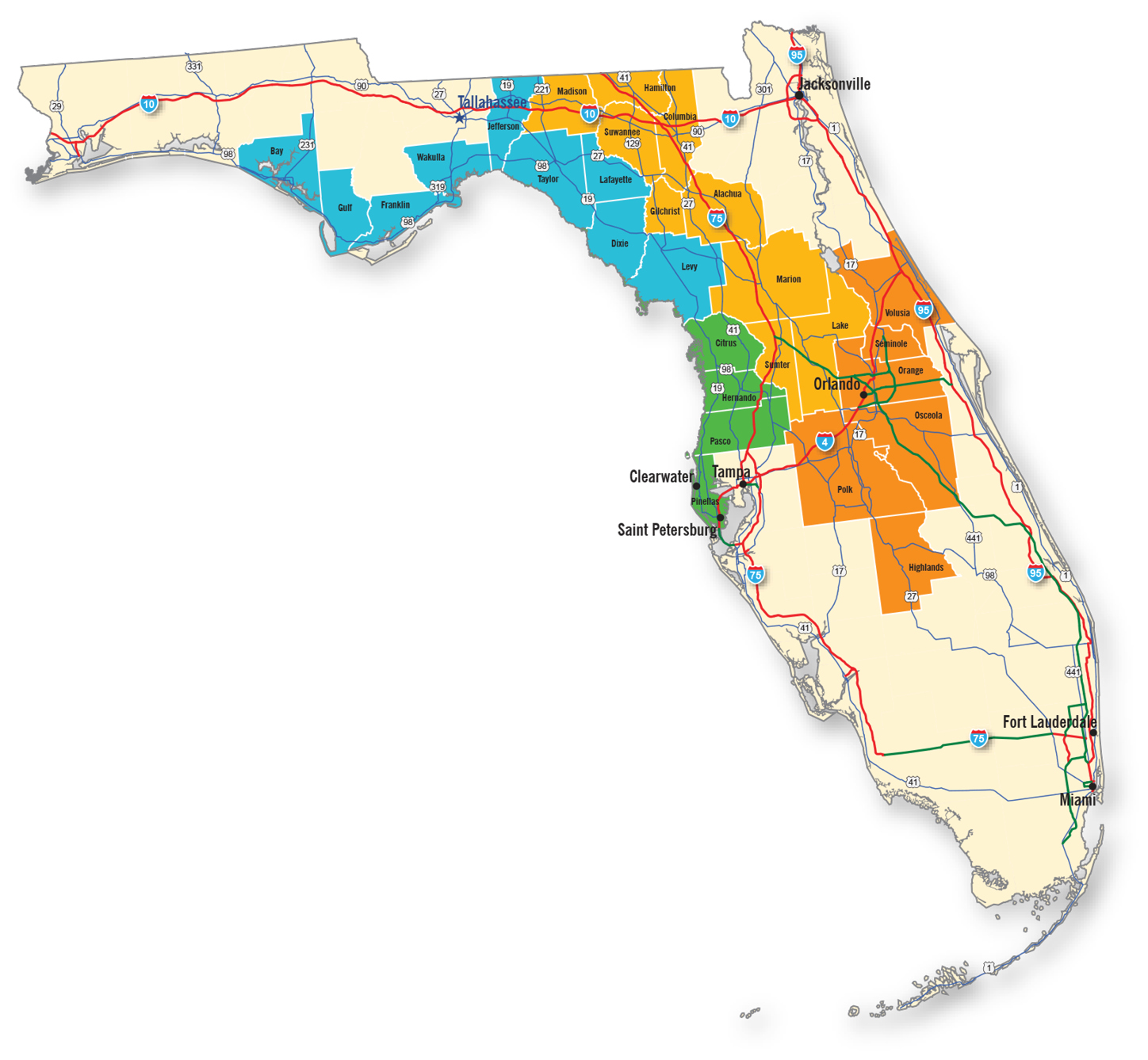
Duke Energy Florida’s economic development team is extending capabilities within Duke territory and remaining open to partnering opportunities beyond it.
Support for those tech startups is great. But they need the same reassurances about power that the big boys do: “Electrical reliability in this tech world is exceedingly important and a reliable and sustainable a power profile is critical to a company’s business model,” Giuliani observes. “Companies are also looking for sustainability and Duke Energy and other utilities in our market are working to make sure sustainability and efficiency are embedded into their power grid.”
In 2021 the OEP worked with Duke to create its own Site Evaluation & Marketing Program. “The Partnership surveyed and studied more than 100 different industrial sites within our larger market and whittled it down to approximately 16 of the top sites most ready for economic development in the region,” Giuliani says. “There are sites in every county of our service area, including NeoCity in Osceola County, a certified site of more than 500 acres focused on semiconductors, sites in Apopka in Orange County focused on industrial, logistics, and distribution, and sites at the Orlando-Sanford International Airport in Seminole County.
“Identifying sites that are most ready for development is important because speed to market is a key driver and time is money,” he says. “Economic development is a team sport, and no single entity can win a project by itself. We are most definitely stronger together and companies like Duke Energy are helping us lead the way. Every company must make a determination and it boils down to three main factors: cost, speed, and risk. The Partnership works with Duke Energy and others to ensure all of those boxes and then some are checked.”
‘Always There’
I spoke with Jeff Hendry, executive director at North Florida Economic Development Partnership, as he drove to South Florida for a conference. His 14-county region is largely rural — “over 8,500 square miles of fresh air, blue skies, green forests and rich farmland,” as the organization’s website puts it. So he knows when rural outreach works and when it doesn’t.
One case in particular stands out as “a huge success story in our region with Duke Energy as a key player,” he says. “In Dixie County, there was a Georgia Pacific Plant that had been dormant for over 10 years. Duke Energy was the energy provider. We had an opportunity after much work with an out-of-state prospect that was initially looking to buy auctioned-off equipment from this dormant plant, to propose and work with him to actually buy the plant, modernize the equipment and invest in retooling. Duke Energy’s involvement from the energy side and various discounted programs was an important part in the reopening of this plant as Cross City Lumber approximately three years ago. It now employs over 200 employees and is an extremely critical business to the region.”
Hendry lauds the Duke Energy team’s past involvement via the Site Readiness program in particular. Now, with the expanded team, “from a personnel standpoint, they can just be in more places. Having two or three dedicated people for our region is invaluable. What’s really cool is the folks they have assigned to our district — Joel Gunter and Mary Swoope — we’ve known for a long, long time.”
Projects in the region benefiting from Duke Energy Foundation grant funds include marketing upgrades in Taylor, Madison and Levy counties. Hendry says the Levy County work will dovetail into another pretty large project that Duke Energy is investing in, an update of the region’s strategic sites inventory that was assembled in 2014. “Some of the properties have been enhanced because of infrastructure investment over the last decade,” he says. “I put out a proposal to a number of potential funding groups, and Duke Energy was the first to respond to us. I got a quick response from Marc Hoenstine, who said, ‘Sure, we’d love to invest in that.’ At the end of the day we hope to bring value to them through the parcels we serve.”
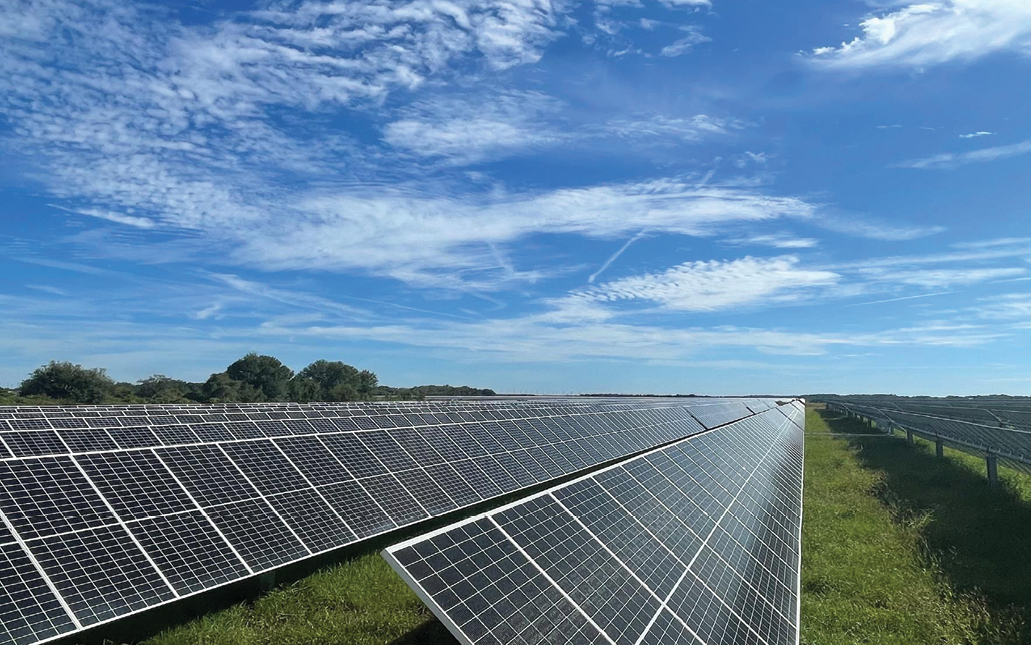
With a combined investment of over $2 billion, Duke Energy Florida’s 25-plant solar generation portfolio — including the Duette Solar Power Plant shown here southeast of Tampa — will benefit all of the company’s 1.9 million Florida customers with around 1,500 MW generated by approximately 5 million solar panels by 2024.
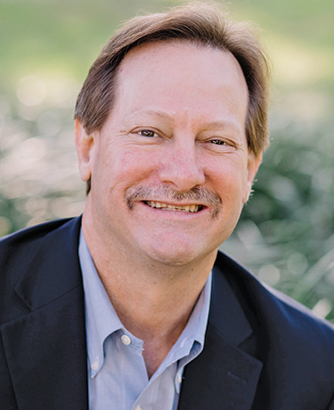
Jeff Hendry
The next stage for Hendry’s region? “We are getting ready to explode with the ability to deliver access to high-speed internet and broadband,” he says, an effort currently led by area electric cooperatives. “Duke is going to be a player in this, I’m sure. Our region is going to be the most highly connected of any rural region in the country. We are looking at how to communicate we are a gig region — we just had a customer connect to 2 gigs of internet service in one of the most isolated communities in our region. And that enables us to work with Duke to start recruiting data centers or life sciences companies. A lot of people want to move to rural if you have that kind of asset. It’s an unbelievable opportunity for us in terms of quality of life, and now we’ll have the ability to work from home, which very few of us think is ever going away.”
As far as Hendry is concerned, not going away is a key attribute in any partner. “At Duke, they’re selfless in their investment in us as a regional economic development group,” he says. “They don’t serve every single piece of property we have in the region, but they’ve always invested in trying to help. If it’s a win for Florida or rural Florida, they’re always there.”
Duke Energy Florida’s Marc Hoenstine reiterates that dedication to the big picture: “We’ve launched strategies to elevate all of Florida, not just our territory,” he tells me.
“Over the last 18 months, we’ve significantly expanded our Florida Program with top talent from across the Florida economic development community,” says Duke Energy Vice President of Economic Development and Business Recruitment Stu Heishman. “We’ve launched new innovative programs and amped up our support of the communities we serve. Our new programs will move the needle for our communities in critical areas and enhance our communities’ competitiveness for sustainable economic development success.
“At the end of the day,” Heishman says, “it’s all about recruiting new industry, creating capital investment, quality jobs and improving the economic vitality of the communities we serve.”
